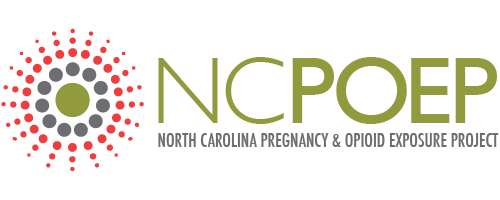Opioid use and use disorders during pregnancy continue to be a significant public health problem. Heroin, a semi-synthetic opioid with a rapid onset of action and a short half-life, is one of the most frequently used opioids during pregnancy. Although heroin is typically injected, an increasing number of users are inhaling or smoking heroin. The use of other opioids during pregnancy has also escalated in recent years, including increased use of oxycodone; hydrocodone; and the controlled-release form of oxycodone, OxyContin®. Data from the National Survey on Drug Use and Health indicate a recent increase has occurred in the non-medical use of prescription opioids and heroin by pregnant women.
Use of heroin and other opioids stimulate the opiate receptors in the brain, bringing physical responses that range from euphoria, to pain relief, to respiratory depression, and nausea. Repeated ongoing use of opioids is associated with increasing tolerance levels, that is, repeated use leads to the need for higher doses of the substance to obtain the same effect. Tolerance leads to physical dependence, resulting in a change to the neuro-chemical balance in the central nervous system, and, in the absence of the opioid, a withdrawal syndrome. Opioid withdrawal is characterized by a range of symptoms including agitation, nasal congestion, yawning, perspiration, muscle cramps, diarrhea, nausea, vomiting, and depression.
Several mechanisms have been proposed to explain the phenomena of tolerance, dependence, and withdrawal in the occurrence of chronic opioid exposure. These include
- increased metabolic breakdown of opioid compounds;
- decreased neurotransmitter release that results in an increased number and sensitivity of post-synaptic receptors; and
- down-regulation of opioid receptors, resulting in decreased production of endogenous endorphins.
Given these physiological processes and changes, some with opioid use disorders will need medication-assisted treatment for prolonged periods, possibly for the rest of their life.
The standard of care for people with an opioid use disorder is medication-assisted treatment with opioid-agonists in conjunction with counseling and supportive services.[1] Methadone and buprenorphine are the most commonly prescribed medications used as part of the treatment of opioid-use disorders.



